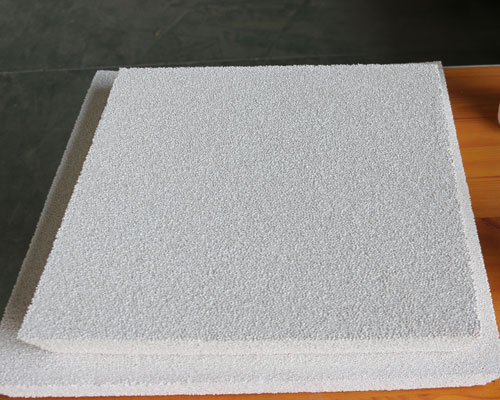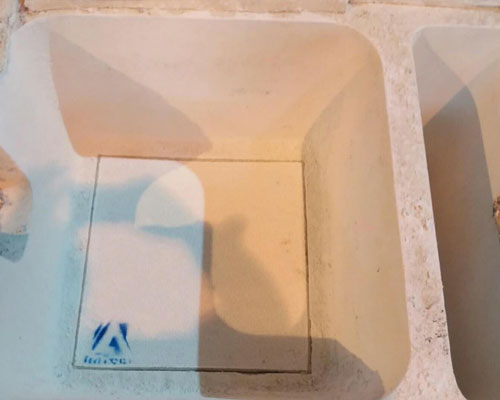Foam ceramic is a kind of sponge-like structure and used to filter aluminum melt. The ceramic foam filter is a filtering device that uses ceramic foam as the filter medium. It is composed of ceramic foam installed in the filter box of the molten metal transfer system between the static furnace and the casting table. The filter box is welded with ordinary steel plates, lined with insulation felt, and the innermost layer is refractory bricks. The molten aluminum flows from the static furnace to the crystallizer after being filtered by the ceramic foam filtering device.
The flow characteristics of ceramic foam depend on the pore characteristics and the size of the ceramic plate. The ceramic foam filter has the advantages of high filtration accuracy, high filtration efficiency, lightweight, small footprint, convenient operation and use, and good working conditions. However, the foam ceramics are discarded after being used once, and cannot be regenerated, and the texture is relatively brittle, so the mixing of debris should be avoided during installation.

Pay attention to the following issues when using ceramic foam filters in production:
- Choose appropriate foam ceramics. When selecting foam ceramics, first consider the requirements for filtration accuracy. In most cases, the use of ceramic foam with 30 holes/in is satisfactory. If the metal is particularly dirty, 20-hole/in ceramic foam can be used for pre-filtering to prevent premature blockage of 30-hole/in ceramic foam. However, in actual production, there are also 40-50 holes/in for products with higher requirements. Second, consideration should be given to the flow rate of liquid aluminum per unit time required for the casting speed, the original cleanliness of the melt, the highest content of inclusions in the metal, and the total throughput of the metal.
- Install foam ceramics correctly. Usually foam ceramics are arranged horizontally in the filter bowl, allowing the aluminum water to pass vertically downward or vertically upward. When the lower casting method is adopted, it has the advantages of uniform rise of aluminum water, no turbulence when it hits the filter, uniform start-up of the filter, and reduced risk of channeling. In addition, when installing the ceramic foam, the assembly part must be sealed with refractory fiber to eliminate the possibility of any bypass.
- Before filtering, heat the ceramic foam to a temperature close to the melt temperature to ensure that when the aluminum liquid flows to the ceramic foam, no metal solidifies and blocks the holes.
The basic requirements for foam ceramic filter plates are:
- It has sufficient room temperature and high temperature strength to ensure that it will not be damaged during transportation, installation and use.
- It has high chemical stability, does not react with aluminum melt in the working temperature range, and does not cause harm to aluminum liquid and the environment.
- It has sufficient through porosity and liquid aluminum permeability to ensure smooth filtration during production.
- Has high resistance to rapid cold and heat. For this reason, the filter plate should have a small thermal expansion coefficient and not crack when heated.

